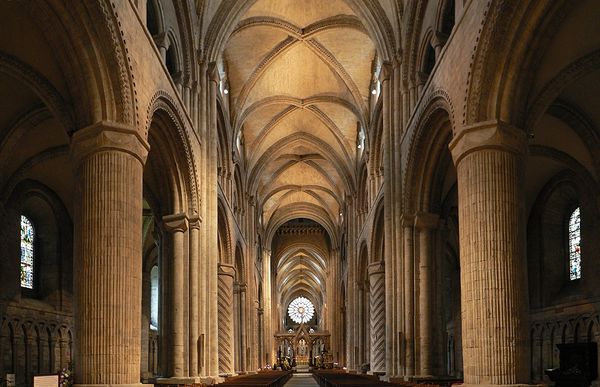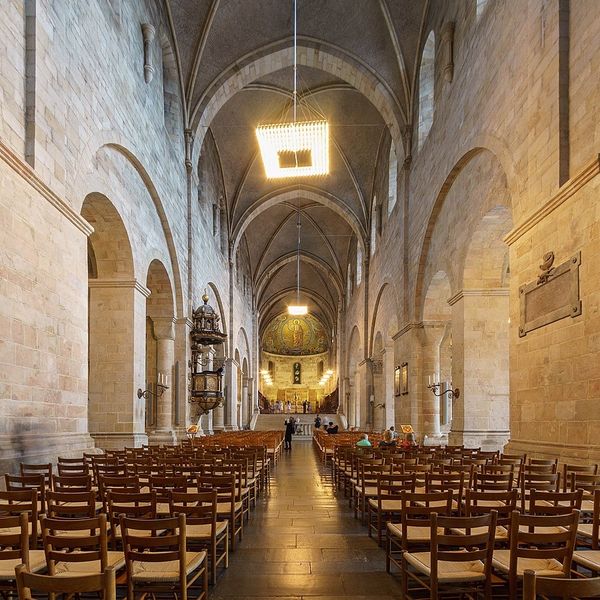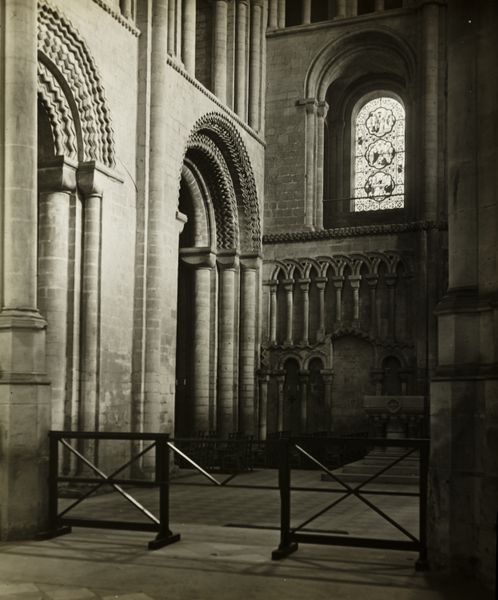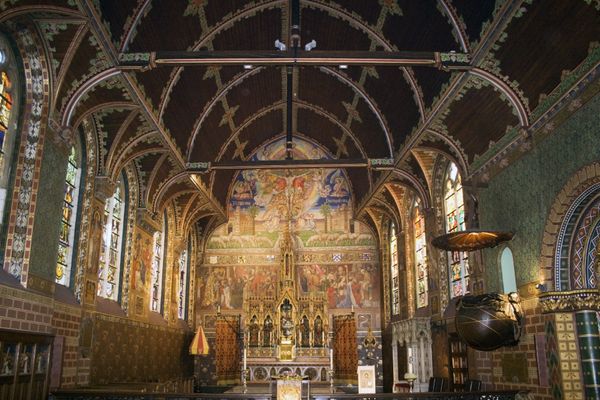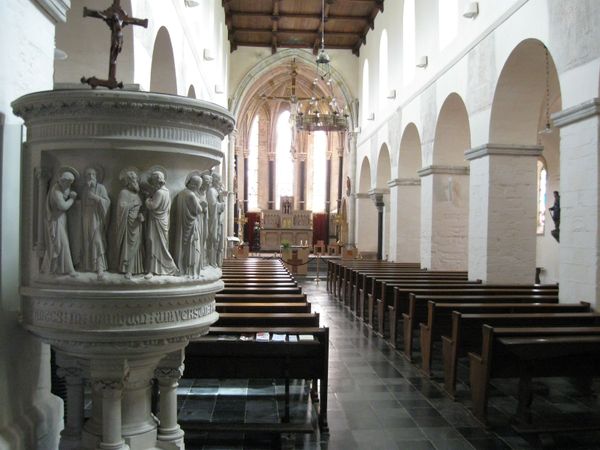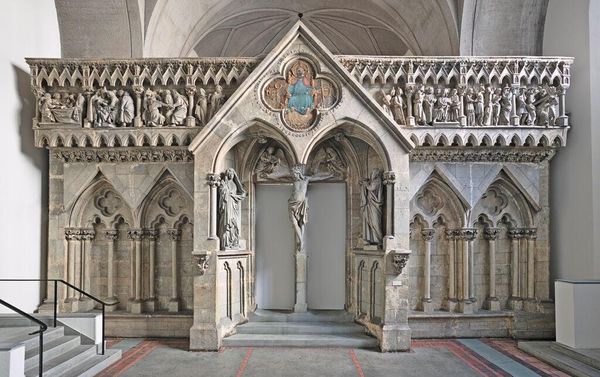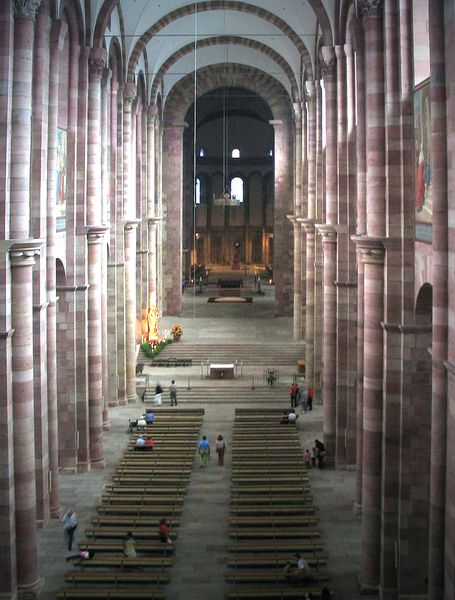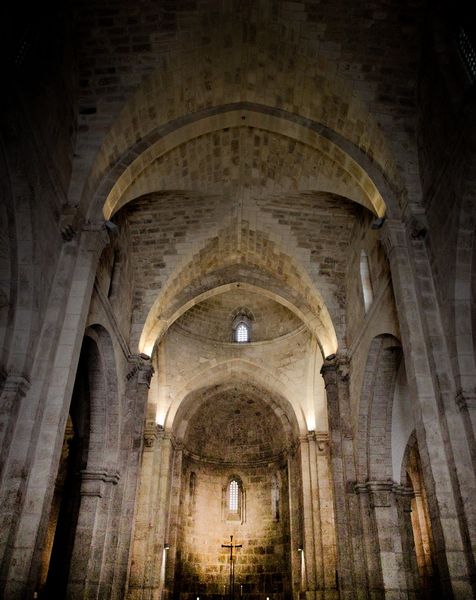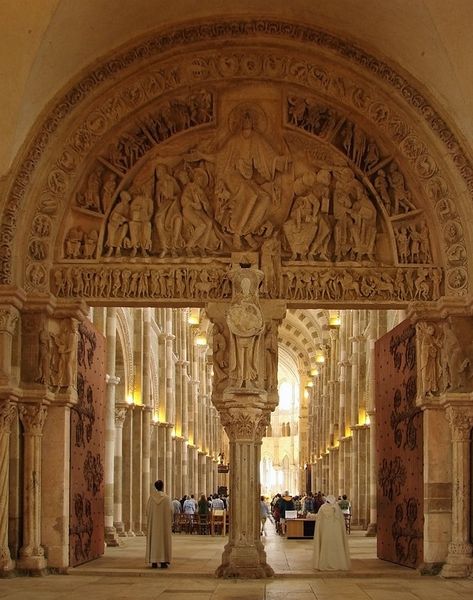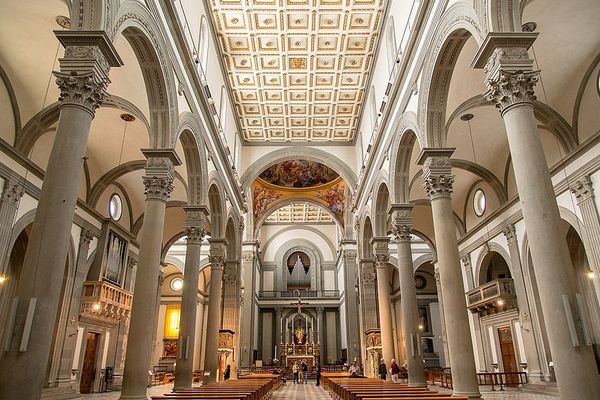
architecture
#
romanesque
#
architecture
Copyright: Public domain
Curator: My first impression is one of immensity. The Lisbon Cathedral's interior evokes a feeling of austerity and grandeur. Editor: And yet that austere grandeur springs from stone, carved and hoisted, piece by back-breaking piece. We're looking at a Romanesque cathedral here, construction started around 1147, and its form follows that function, the physical reality of faith. Curator: Precisely! Romanesque architecture utilizes specific visual languages that still resonate today, almost a millennium later. The repetition of the rounded arches, for example, mirrors the stability of faith itself, creating a comforting and grounding rhythm for worshippers, then and now. The solidity represents endurance, an important idea considering the religious and political landscape of Portugal at the time. Editor: Don't forget that each block speaks volumes about the skilled masons, laborers, and the society that invested in these gigantic enterprises. Romanesque cathedrals became pivotal spaces not just for religious rites but also for early forms of urban community building, relying upon localized skills and resources, for a monumental output. Curator: Absolutely, I appreciate you bringing attention to its local presence, to what the space signified socially. Lisbon Cathedral speaks through its visual language: The high nave leading the eye upward signifies a path towards the divine, just as the Latin cross plan represents Christ’s sacrifice, becoming a constant reminder of deeply shared beliefs for the early Portuguese kingdom. Editor: And I notice the weightiness that transmits upwards! So much labor involved just in material extraction before we even consider architectural finesse. The dim light filtering through contributes to an atmosphere but equally speaks to limited fenestration imposed by structural choices tied to weight and its distribution across the structure. Curator: I find this synthesis of tangible, structural form and evocative symbolism quite beautiful, because it reminds us how deeply rooted our understanding of architecture is within our collective consciousness. This dialogue between materials and symbolism demonstrates how effectively images convey culturally embedded beliefs over time. Editor: I concur that it showcases remarkable coordination and investment on many societal levels to embody an idealized faith. Thinking about this, next time I shall attempt some form of monumental bread-making to begin to comprehend the amount of collective labour, resources, skill required for its making.
Comments
No comments
Be the first to comment and join the conversation on the ultimate creative platform.
